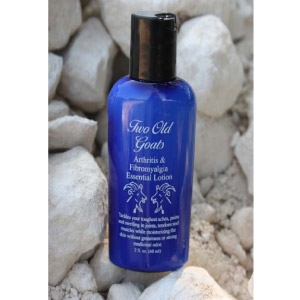
When a joint is overused or bruised, it stimulates white blood cells to enter the joint, bringing in more viral particles. In an infected doe, the virus is present in every joint, however the joints that become swollen and painful are those most commonly used. There are five main presentations of the disease, with arthritis being the most common in Canada. They are also able to travel into other body fluids such as milk or mucous. The CAE virus lives within white blood cells that circulate in the blood stream to fight disease.

Regular testing and rigorous culling of all seropositive goats, or strict segregation of seropositive and seronegative goats, must be practiced if disease eradication is the goal.This joint has locked up as a result of CAE. Infection may persist in herds in which this is practiced due to horizontal transmission between adults. CAE infection has been considered primarily to be spread from dam to offspring through virus-laden colostrum and milk, and control programs have been aimed at separating the newborns from the adult population and feeding heat-treated colostrum and pasteurized milk. A chronic, progressive interstitial pneumonia or a wasting syndrome may also be seen in adults. CAE infection in goats can manifest in numerous ways: subclinical, persistent infection a progressive paresis of young goats 2–12 months old agalactia with a firm, noninflamed udder at parturition in bred females or an arthritic condition with pain and swollen joints in adults. Although tapeworms are not generally considered to be of clinical importance, their discovery can be used to review the subject of helminthiasis with owners and develop an overall parasite control program (see Gastrointestinal Parasites of Sheep and Goats).Ĭaprine arthritis and encephalitis (CAE, see Caprine Arthritis and Encephalitis) virus has emerged as an important infectious agent of intensively raised dairy goats, but all breeds of goats are susceptible to this retrovirus. Tapeworm proglottids are often noted in goat feces by owners. Parasitism is insidious on hobby farms, where the problem may not exist for several years and then suddenly explodes as goat numbers continue to increase and facilities become overstocked. Persistent coughing in late summer and autumn is the usual presentation of lungworms secondary bacterial pneumonia with fever is a common sequela. Haemonchus contortus infection has emerged as a major constraint in the expanding meat goat industry in the southeastern USA. Poor growth, weight loss, diarrhea, a scruffy hair coat, signs of anemia, and intermandibular edema (bottle jaw) may be seen with GI parasitism or liver fluke disease. Although most common in yearlings during their first season on pasture, clinical parasitism may be seen in adults as well. Age-related resistance to parasitism in goats is weak relative to that in other ruminants. GI nematodiasis, liver fluke infestation, and lungworm infections all may be seen. In pastured and free-ranging goats, helminthiasis can assume great clinical significance. In Angora goats kept extensively, the problem is seen at weaning, when the kids are kept in smaller lots and fed supplement on the ground.


Chronic coccidiosis is one of the main causes of poor growth in kids and is responsible for the uneconomical practice of delaying breeding for a year until the goat has reached adequate size (70 lb.

Coccidiostats added to the water or feed are adjuncts to a management control program and not substitutes. Eradication is not feasible, but infection can be controlled through good management practices.
TREATMENT FOR ARTHRITIS IN GOATS PORTABLE
To help prevent coccidiosis in artificially reared dairy goats, the kids should be put in small, age-matched groups in outside, portable pens that are moved to clean ground periodically. Rotating all the kids through one or two pens is dangerous. In peracute cases, kids may die without clinical signs. Signs include diarrhea or pasty feces, loss of condition, general frailness, and failure to grow. As infection pressure builds up in the pens, morbidity in kids born later increases. Adult goats shed coccidia in feces, contaminate the environment, and infect the newborn. Goats harbor several species of coccidia but not all exhibit clinical coccidiosis (see Coccidiosis).


 0 kommentar(er)
0 kommentar(er)
